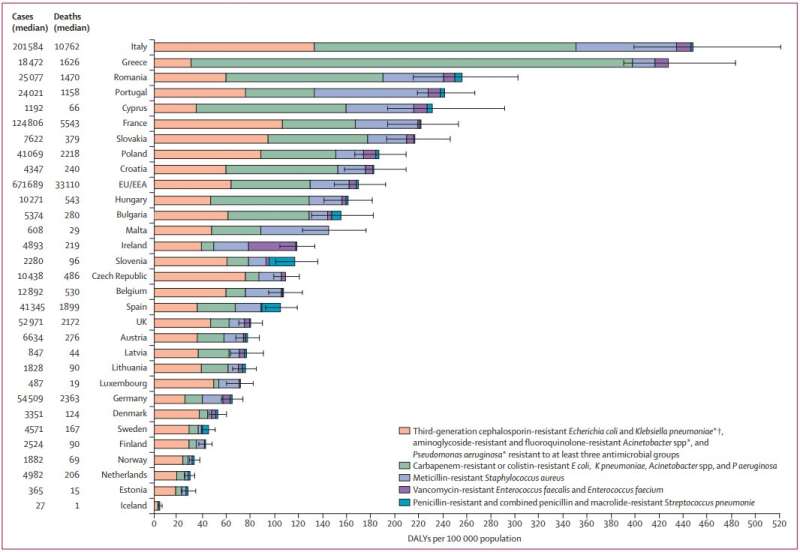Antibiotic-resistant bacteria now claiming 33,000 lives annually

An ECDC study estimates the burden of five types of infections caused by antibiotic-resistant bacteria of public health concern in the European Union and in the European Economic Area (EU/EEA). The burden of disease is measured in number of cases, attributable deaths and disability-adjusted life years (DALYs). These estimates are based on data from the European Antimicrobial Resistance Surveillance Network (EARS-Net) data from 2015.
The authors said, "The estimated burden of infections with antibiotic-resistant bacteria in the EU/EEA is substantial compared to that of other infectious diseases, and increased since 2007. Strategies to prevent and control antibiotic-resistant bacteria require coordination at EU/EEA and global level. However, our study showed that the contribution of various antibiotic-resistant bacteria to the overall burden varies greatly between countries, thus highlighting the need for prevention and control strategies tailored to the need of each EU/EEA country."
The study estimates that about 33,000 people die each year as a direct consequence of an infection due to bacteria resistant to antibiotics and that the burden of these infections is comparable to that of influenza, tuberculosis and HIV/AIDS combined. It also explains that 75 percent of the burden of disease is due to healthcare-associated infections (HAIs) and that reducing this through adequate infection prevention and control measures, as well as antibiotic stewardship, could be an achievable goal in healthcare settings.
Finally, the study shows that 39 percent of the burden is caused by infections with bacteria resistant to last-line antibiotics such as carbapenems and colistin. This is an increase from 2007, and is worrying because these antibiotics are the last treatment options available. When these are no longer effective, it is extremely difficult or, in many cases, impossible to treat infections.
More information: Alessandro Cassini et al, Attributable deaths and disability-adjusted life-years caused by infections with antibiotic-resistant bacteria in the EU and the European Economic Area in 2015: a population-level modelling analysis, The Lancet Infectious Diseases (2018). DOI: 10.1016/S1473-3099(18)30605-4















